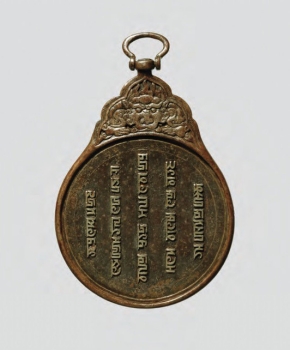In 1267 the Persian astronomer Jamal-ad-Din (act. thirteenth century) made seven astronomical and geographical instruments for the Sino-Mongol court of Khubilai Khan (1215–1294, r. 1260–1294). Among these devices was one retrospectively catalogued in the Yuanshi (History of the Yuan Dynasty) as ku-lai-yi-a-er-zi, the Chinese transliteration of its Persian name, karahi-arz, or terrestrial globe. The globe made by Jamal-ad-Din visualized the Mongol Empire; the expansive surface, interconnected waterways, and measurable roads portrayed on the globe aided representation of the contiguous khanates established by the Mongol conquests of the mid-thirteenth century: Chagadai (1227–1405), Qipchaq (1242–1359), Il-khanate (1256–1335), and the Chinese Yuan dynasty (1260/1279–1368). This globe postdated the planning of the new Sino-Mongol capital,
While the making of a worldview, the building of multiple capitals, and the rhetoric of visible difference suggest the impact of Mongolian rule on the Chinese visual field, Sinocentric histories of the arts of the Yuan dynasty have largely rendered the Mongolian colonial project in China invisible. A conquest is, however, difficult to hide. Therefore, during my residency at CASVA, I have been drafting a book, “Forms of Cosmopolitanism in Sino-Mongol Quanzhou,” which demonstrates the impact of the Mongol conquest on the visual arts in China. Primary sources for any number of sites could document the larger category of the Sino-Mongol city, but my book focuses on a single city, Quanzhou, on the southeast coast of China, also known in Arabic, Persian, and Latin as Zaitun. From the twelfth century onward, Quanzhou was a major port, described by Marco Polo (1254–1324) as one of the two largest in the world. A nexus of maritime trade routes that extended throughout Asia to India, the Near East, and the east coast of Africa, Quanzhou was known as far away as Sicily and Hamat.
To explain the impact of Mongolian rule, two chapters of the book attend to Quanzhou before the Mongol conquest of 1276, while two further chapters address the city after the conquest. The book begins by tracing the development of Quanzhou from its founding on its present site in 711 CE to the building of its most important civic monuments, the so-called Twin Pagodas of the Kaiyuan si Buddhist temple, in the first half of the thirteenth century. The book explores the ways in which the morphology of the city walls and the iconography of carved stone reliefs on the bases of the Twin Pagodas formed the urban legends and civic identity of Quanzhou. By reconstructing the trading relationships of the city to points throughout its maritime hinterland, the book then traces the transformation of the visual and material culture of Quanzhou before the conquest. The book subsequently analyzes the remaking of the city under direct and indirect Sino-Mongol patronage, including the building of three new mosques, three Catholic churches, a Brahmanic temple, and a Manichean temple, arguing that in Quanzhou the Sino-Mongol state fostered urban cosmopolitanism to generate forms neither Chinese nor Mongolian through which to exercise cultural power and political authority over a dominantly Chinese population. Ultimately, the book posits that cosmopolitanism so powerfully shaped Yuan dynasty cultural production in Quanzhou that even media such as Chinese painting, strongly tied to the Chinese language and to calligraphy, were co-opted for the expression of Sino-Mongol ideology.
This year I have had the opportunity to extend my work into Mongolian primary sources, complementing my use of sources in Classical Chinese, Tibetan, Persian, and Latin. At CASVA, my research and writing have been supported by
Members' Research Report Archive
Forms of
Jennifer Purtle, University of Toronto
Ailsa Mellon Bruce Senior Fellow, 2011–2012

Safe-conduct pass (